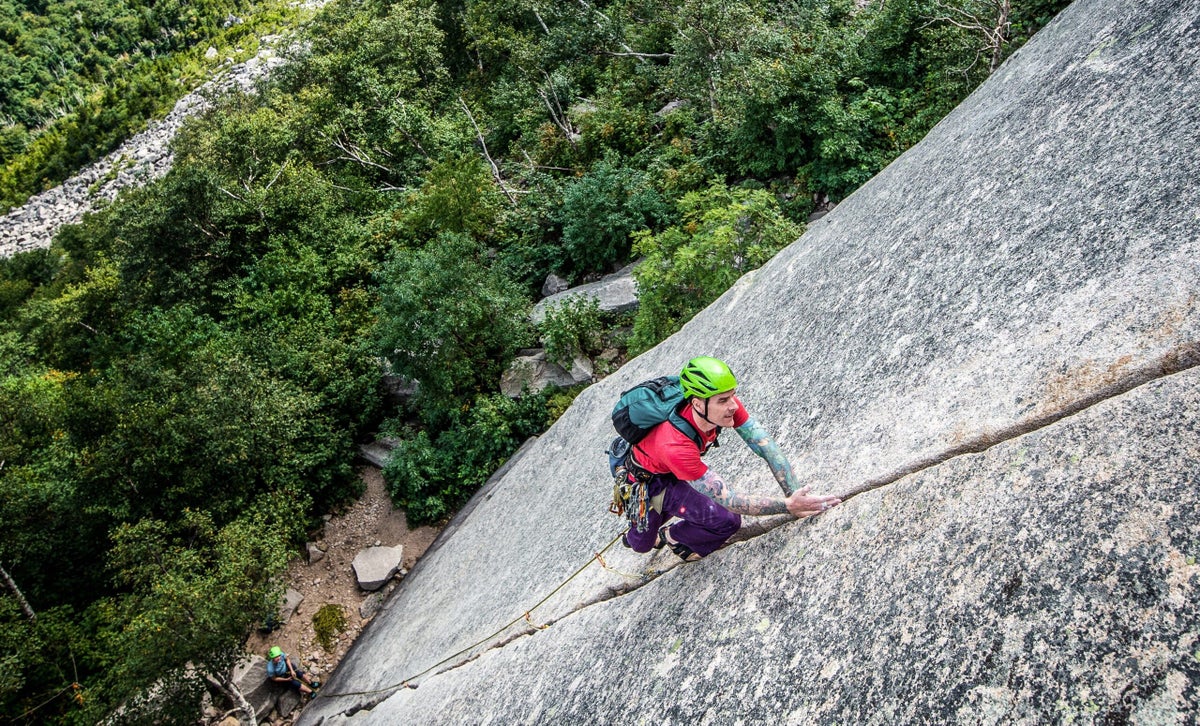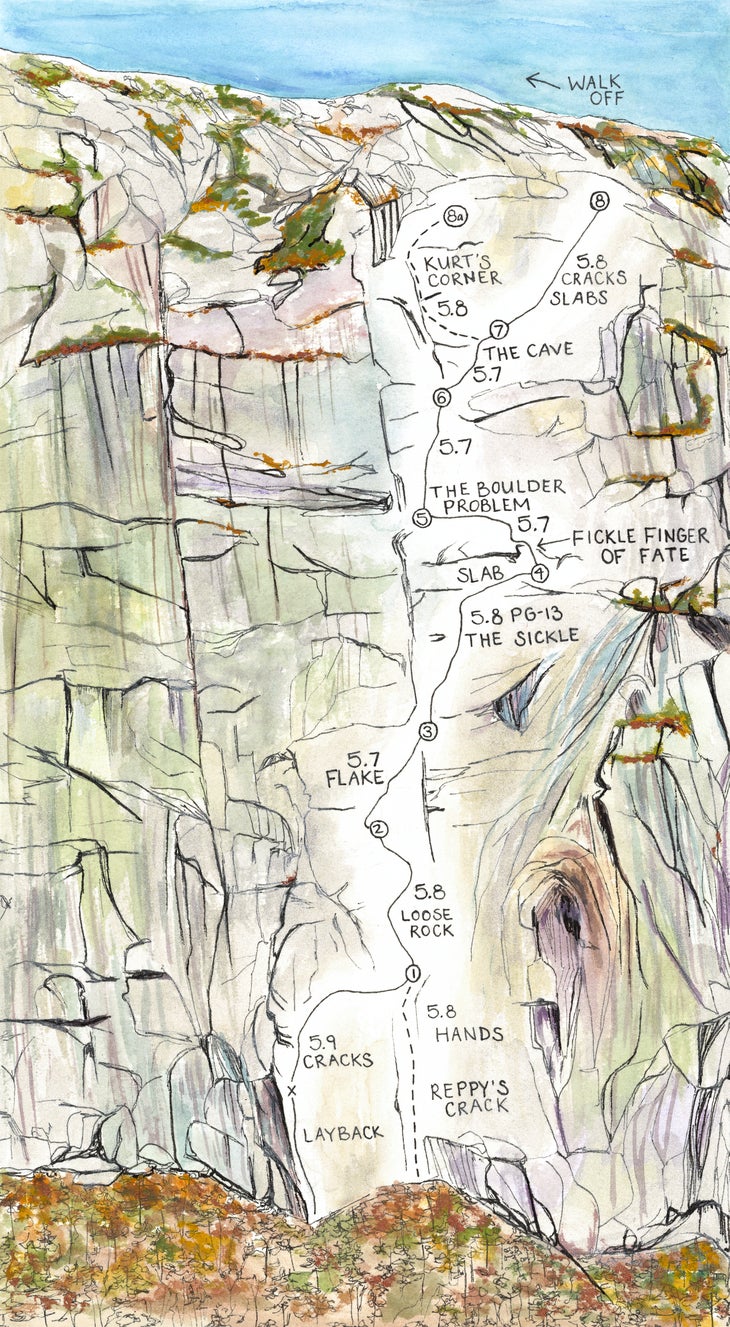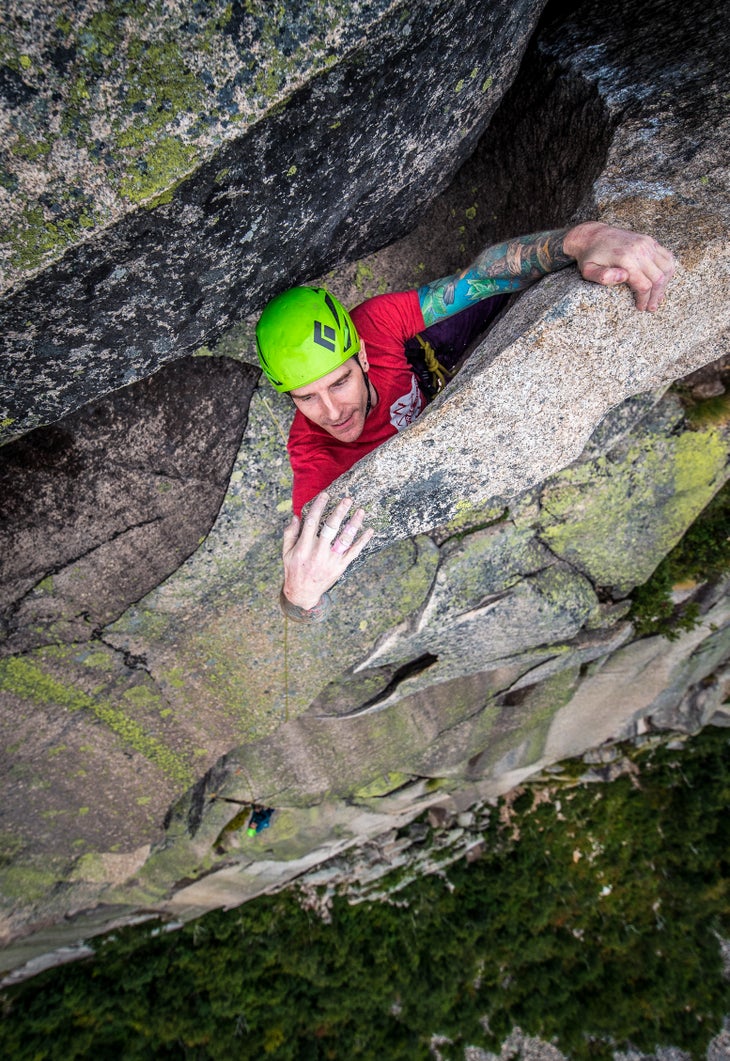How to Climb New England’s Best 5.8 Multi-pitch

If I told you about a stunning seven-pitch granite route with a bit of everything—splitter cracks, hero roof moves, squeeze chimneys—your first guess might be a classic out West. However, Moby Grape, established in 1972 by Joe Cote and Roger Martin, is one of the best moderate trad climbs in the Northeast. It’s located in New Hampshire’s Franconia Notch State Park on the 1,000-foot-high Cannon Cliff, which is known for shedding rock. Now factor in the biting black flies and weather that sneaks up on you from behind the cliff, and you can see why Moby Grape offers all the finest charms of New England rock climbing.

The original first pitch consists of an awkward layback, followed by a traverse across the face to finish with some finger and hand crack. Though it’s a good pitch, it’s most often skipped for Reppy’s Crack (5.8)—a 120-foot hand-crack splitter established in 1965—a temptation my partner Alex and I could not resist on our ascent in 2015.

As the story goes, in 1971, Joe Cote first scoped out Moby Grape’s middle pitches when he and Ben Read traversed off from the neighboring Psyche Dike, as a party above them was dislodging lethal amounts of rock (seeing a pattern?). Spotting the triangular roof on what would become pitch two of Moby Grape, Cote led this sweet ropelength with a tricky crux—a balancey move up and over the roof—only to glimpse the alluring Finger of Fate, an improbably attached flake protruding from a Reaper-like sickle. Unable to resist, Cote climbed up to the Sickle, and then swung back left to rejoin Psyche Dike. Convinced that these new ropelengths could be the money pitches of a popular moderate, Cote came back with Roger Martin in 1972 to make Moby Grape’s first integral ascent.
In 2015, Alex and I were swapping leads, and I ended up on the sharp end on the Finger of Fate. One can either squeeze between the fin and the wall or come around to the exposed face of the Sickle. Although I’d never been in a squeeze chimney, I chose the former—and got stuck when the large cams swung across my body. Immobilized for what felt like hours—though it was probably more like 10 minutes—I finally freed myself by sucking in my belly and shoving the cams back over. I then slithered onto the top of the fin, having experienced the magic of the Finger.

After cruising through the boulder-problem crux of pitch 5, we jinxed ourselves by proclaiming that we only had two more pitches left and would reach the car before dark. Alex led pitch 6, the Cave Pitch, but then a half hour in went silent after he cleared the cave roof. As a newer climber, I stood at high alert, willing the rope to move. Finally, I yelled up, “Are you OK?” to which I got a response of, “Not really—I’m stuck.” Alex had been sucked into Kurt’s Corner, an alternative finish that notoriously stays wet. He was now five feet above his last piece (a 0.2 BD X4), gripped, clinging to the dripping blocks that make up this left-facing corner. We both held our breath as Alex tiptoed back down to a small ledge to regain the standard route, which we finished without a hitch.
Cannon continues to shed large chunks, with the massive flake that formed the whale’s back on the final pitch of the classic Whaleback Crack coming down in 1997 and the “Old Man in the Mountain,” New Hampshire’s state emblem since 1945, collapsing in 2003. Considering how temperamental the geology here is, it’s best not to wait to check out this Northeast gem, because it might be gone tomorrow.

The Beta
Location
Cannon Cliff, Franconia Notch State Park, New Hampshire
Grade
5.8 PG-13
Length
Seven pitches; 1,200 feet
First Ascent
Joe Cote and Roger Martin; July 1972
Related stories:
-
The Best 5.8 Multipitch I’ve Ever Done
-
Mount Katahdin’s Fairytale Climb Is a Reality You Must Experience
This article first appeared in Climbing Issue 375
The post How to Climb New England’s Best 5.8 Multi-pitch appeared first on Climbing.

